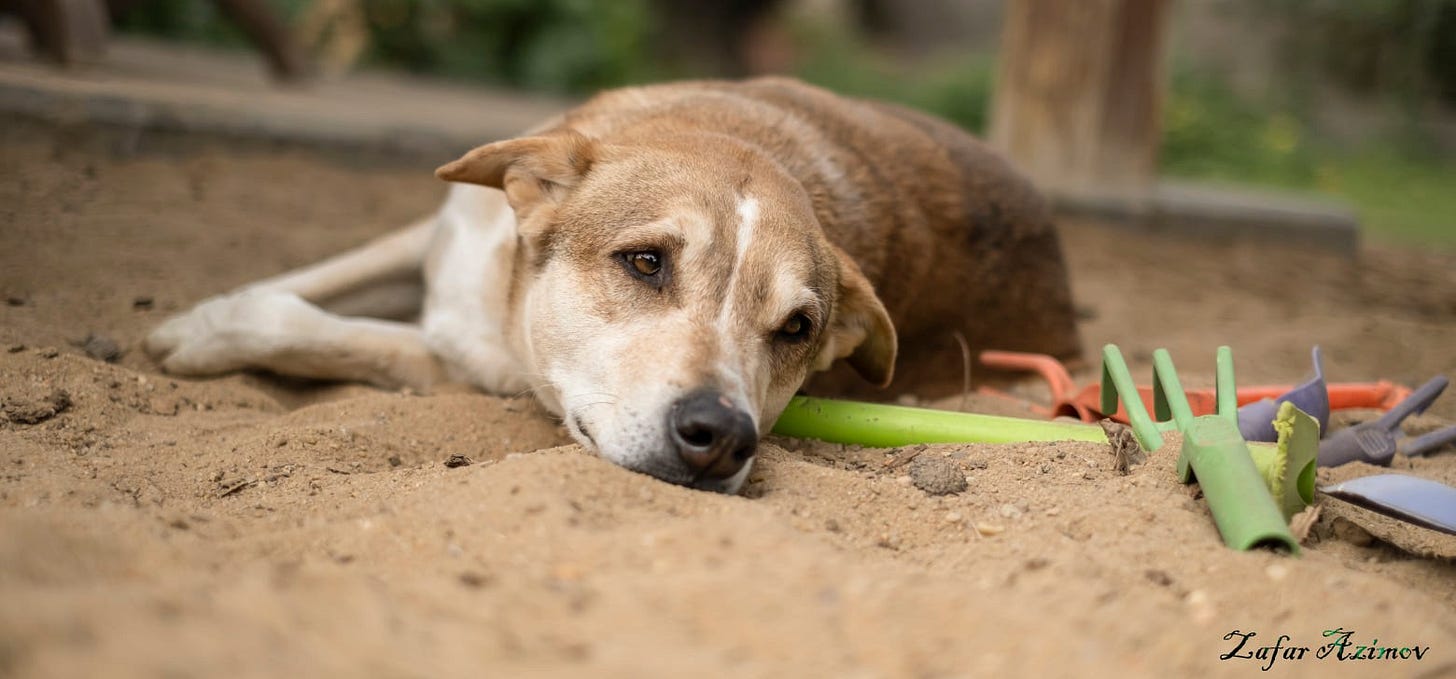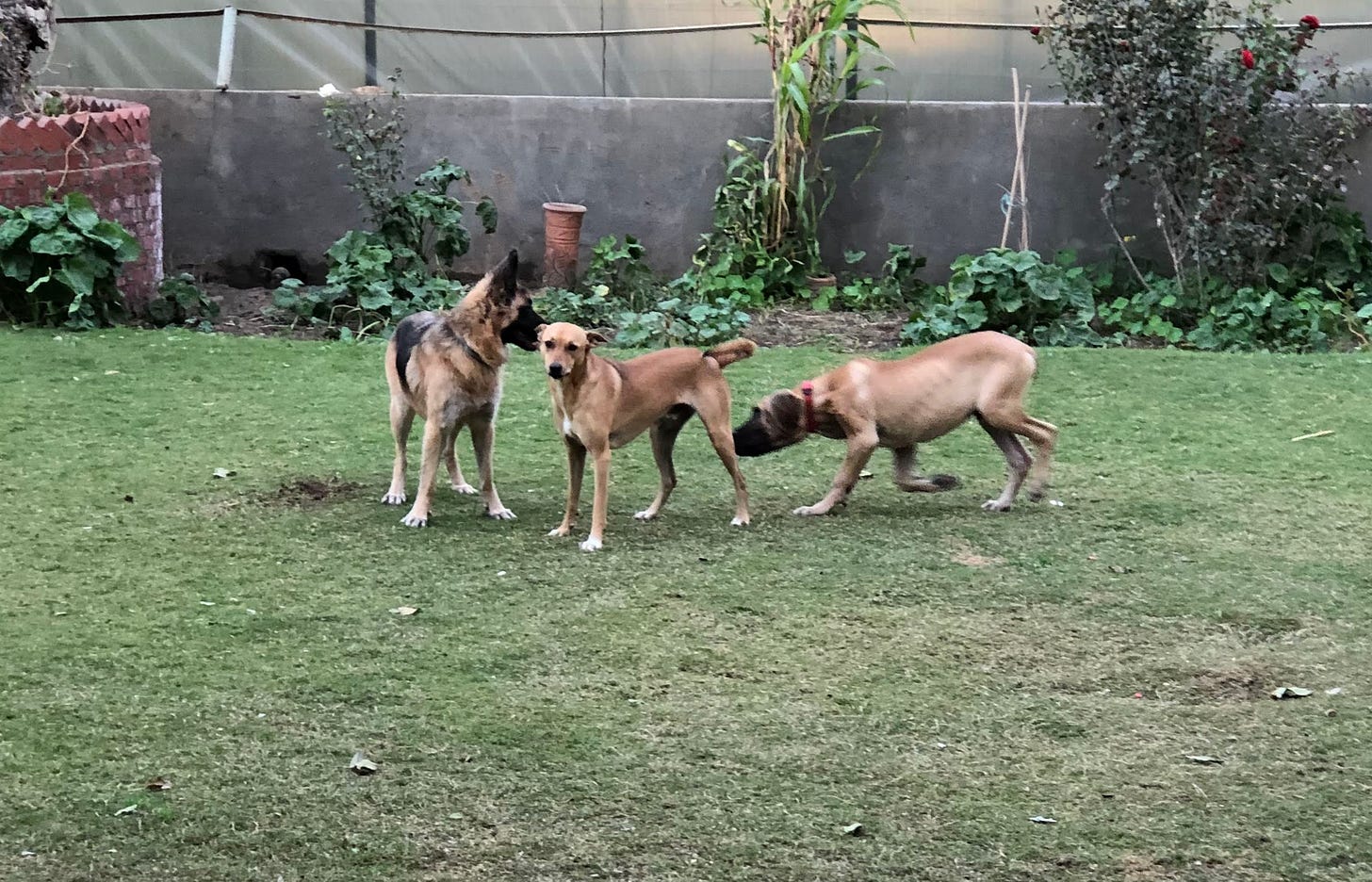Before You Talk, Listen
Dr. Dolittle wasn't alone in communication, but we must learn to hear before we can speak.
I have a lot of children who come to the farm, and I joke that much of what we do here is to rent dogs for a few hours to kids who can’t have them at home. We also have a lot of schools who come to the farm to learn about plants and animals, and on these farm visits, I realised recently that I probably spent almost half of the time when I am talking to the students explaining what the dogs are talking about. No visit goes by without me being asked, “But, how do you understand what they are talking about?” when I have told them that the dogs talk all the time, but mostly to each other. This morning an article online about a linguist who is studying the communication of cows in Holland made me think harder about this. I have lived with animals most of my life and for most of the time, I have been more comfortable talking to them than I have been talking to human beings. I’ve trained my horses with speech, the dogs, the cats, the parrots, everyone… even my children.
Humans and animals don’t speak in the same ways. I am not sure exactly how dogs know what I want them to know, but I am very aware that if I so much as think about a nice jaunt in my car, Kate is there by the back door, but if I am thinking about a schlep to the bank, she just looks at me briefly and goes back to sleep on the sofa. There might be a bit of telepathy involved for some dogs. JC comes to announce every morning who has arrived at the farm as they are arriving. His announcements are not the same for everyone either. If there are visitors to the farm he herds me out to the driveway to meet the bus or car, and there is no way at all that I will be allowed to continue to check my emails. I have to go.
I never really considered how I talk to dogs or horses. It was something that simply happened. But lately, probably as a function of not being so active physically, I have been thinking more about it. I’ve been considering setting up some classes to teach people about dogs here. We have over a dozen dogs of various sizes, shapes, breeds or combinations thereof, ages, and appearances. I would love to share with others information about what I have learned from my over 30 years living in a dog pack. So many people just consider what a dog looks like without thinking about the possible information that is present in a dog or puppies appearance. Puppies are dogs in disguise and no one really knows what they will be like once they reach maturity at about four years. And that is a shock to most prospective dog owners in itself. Puppies are NOT mature at a year or even two. They can mate and produce offspring, but the brain is generally not firmly in place until they are about four years old.
The interactions of a pack of domestic dogs are easily as complicated as those in a corporate board room, any nursery school, a basket ball team, or a child’s birthday party. In the group above, Teddy (the German Shepherd) was the oldest of the dogs. We never knew her background, only that she had been found in the middle of a highway and that she was terrified of almost every human being that she met, especially if they were male. She adopted one of the girls at the farm and was her constant shadow until the day Teddy died in her sleep. The dog in the middle (BenBen) was probably about the same age or slightly younger than Teddy was, but he had been found abandoned in a clover field by my staff and brought to the farm as a tiny puppy. He was never particularly frightened of anything or anyone, made friends very easily with everyone, and is still comfortable with everyone at the farm … EXCEPT Bran (the Great Dane) who was still very young at that point. He is still young in age, about five or six years old, but as a Dane isn’t that physically strong a breed, he is aging more quickly than other dogs. He is also not the brightest bulb in the box in terms of thought processes and he is VERY short sighted so he often can’t really see what is going on. BenBen does not really trust Bran’s decisions, and that is clear on his face. All of the dogs in the pack are aware of Bran’s deficiencies. So interpreting an interaction among dogs is largely reliant on behaviour, while if a dog thinks that you are likely to understand what it is going to try to tell you, it might try direct communication as JC is prone to do.
I’m thinking that classes on animal communication would be marvoulous to teach, but the first thing that I need students to do is to turn off that yammering little human voice in their head so that the animals can be heard.






Yes, as you well know, all teachers struggle with engaging thee student, no matter their age, to focus and stop the ‘yammering in their head.’
I really enjoyed this article. Thank you!